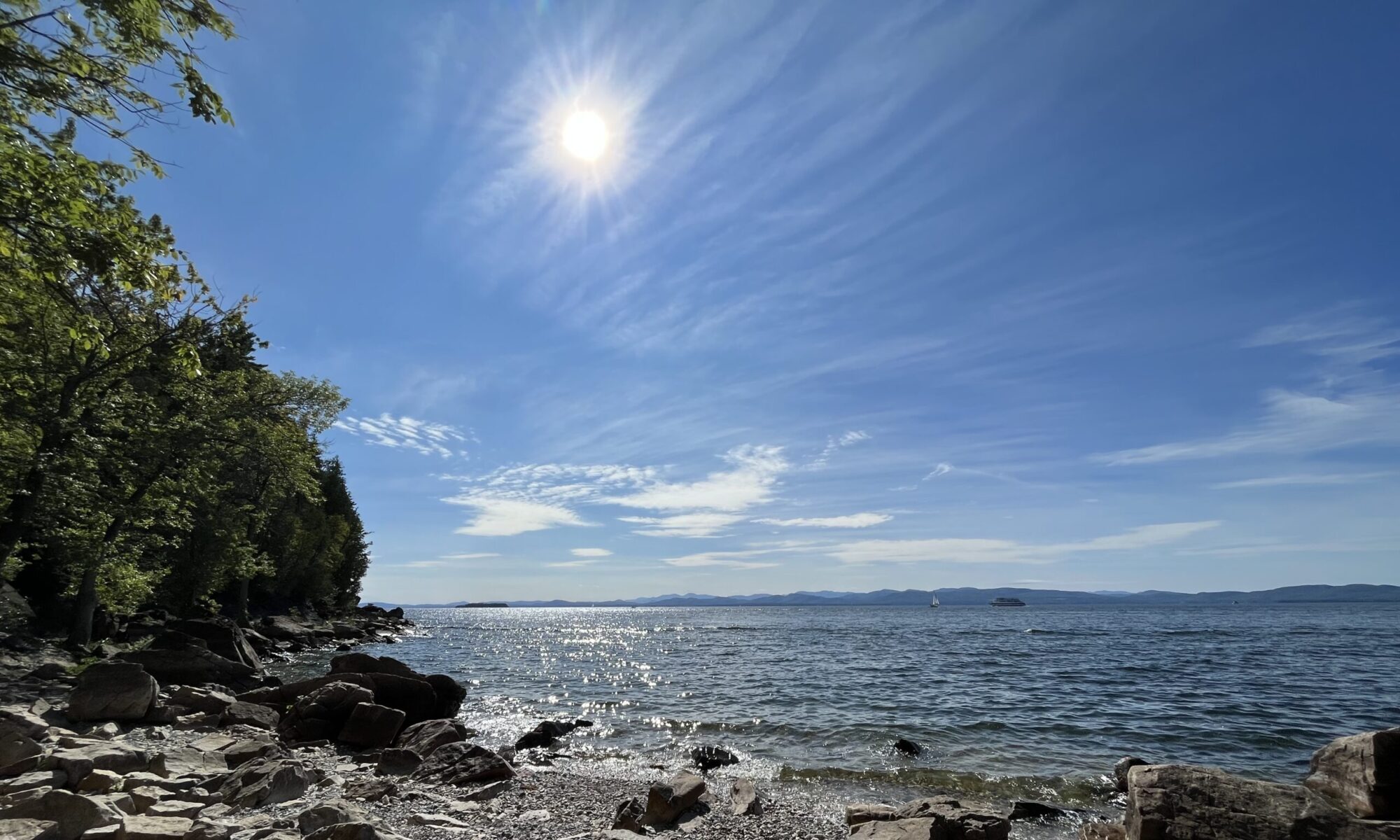How has your site changed over time? Phenologically, and also maybe larger human-caused or storm-caused changes.
From the colors of the leaves, to the rise in water level, we have seen Rock Point through a myriad of ebbs and flows. At our first introduction, I hadn’t even bought a hiking backpack yet, and the temperature was still somewhere around 70 degrees. Since then, I’ve learned to ski, bought spikes for my very own hiking boots, and the ice at Rock Point has frozen and then thawed again. We’ve both grown a lot over these last few months, my phenology site and I, and I can’t believe our monthly visits have come to an end.
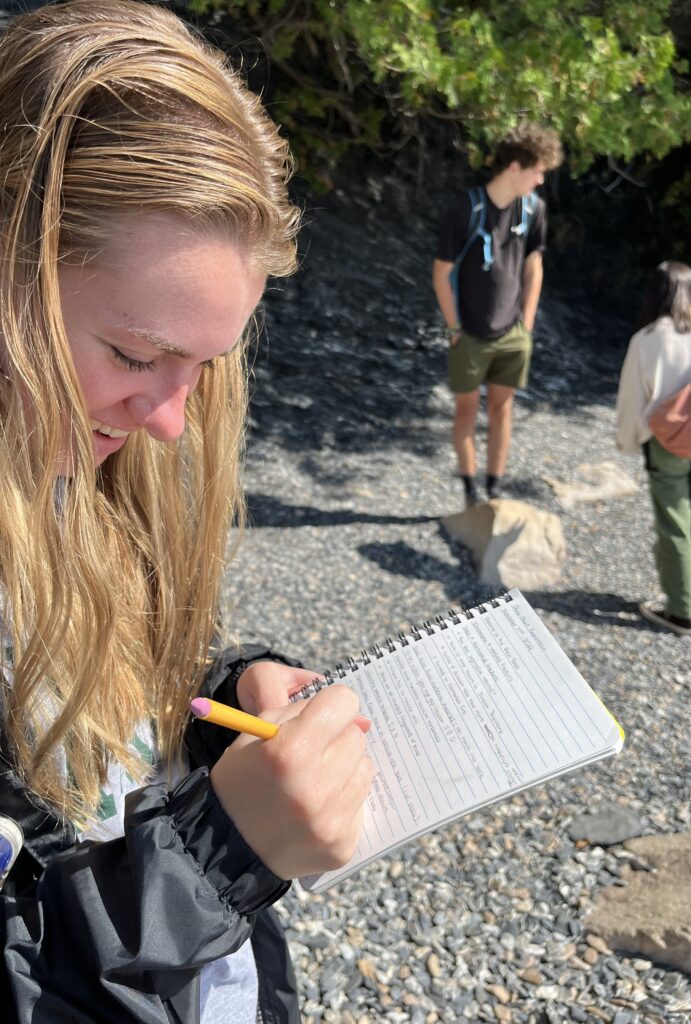
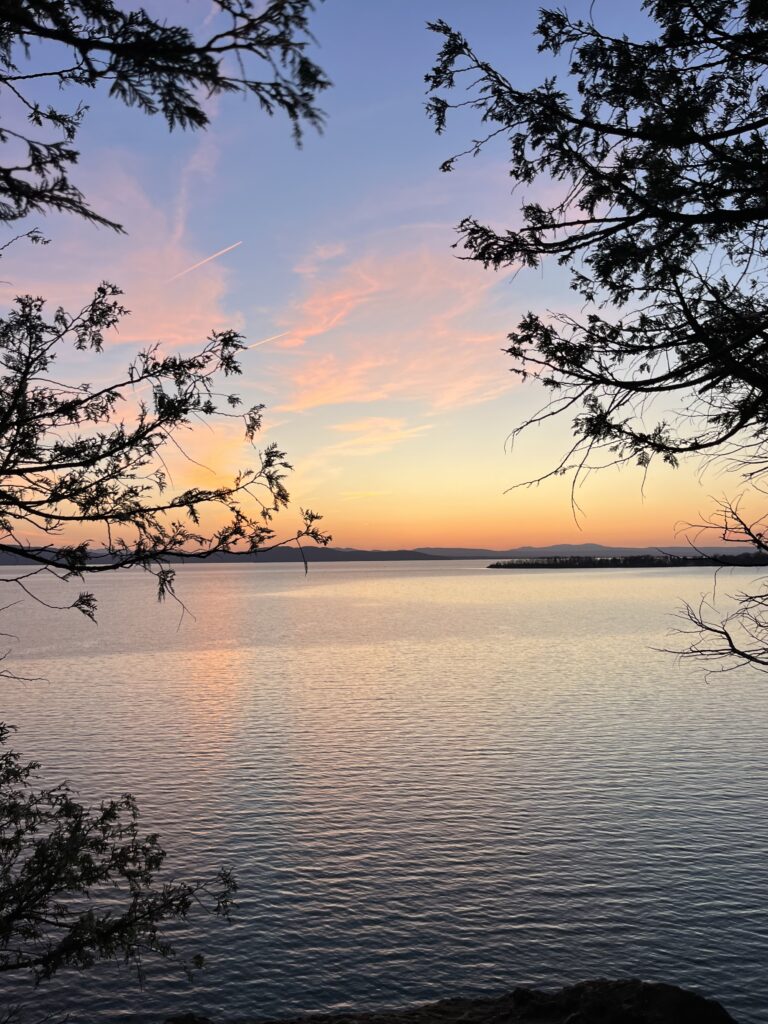
What are the major and minor landmarks you’ve become familiar with?
There are certain landmarks I find myself checking in on each time I visit, certain spots I like to sit in…the Northern White Cedar that hangs over the waterfront, my “chair rock” and “sit spot,” and the lone green ash that stands tall at the water’s edge nearest to the climbing rock. Each of them has become a staple in my Rock Point experiences over the months in its own way, representing one memorable visit or another.
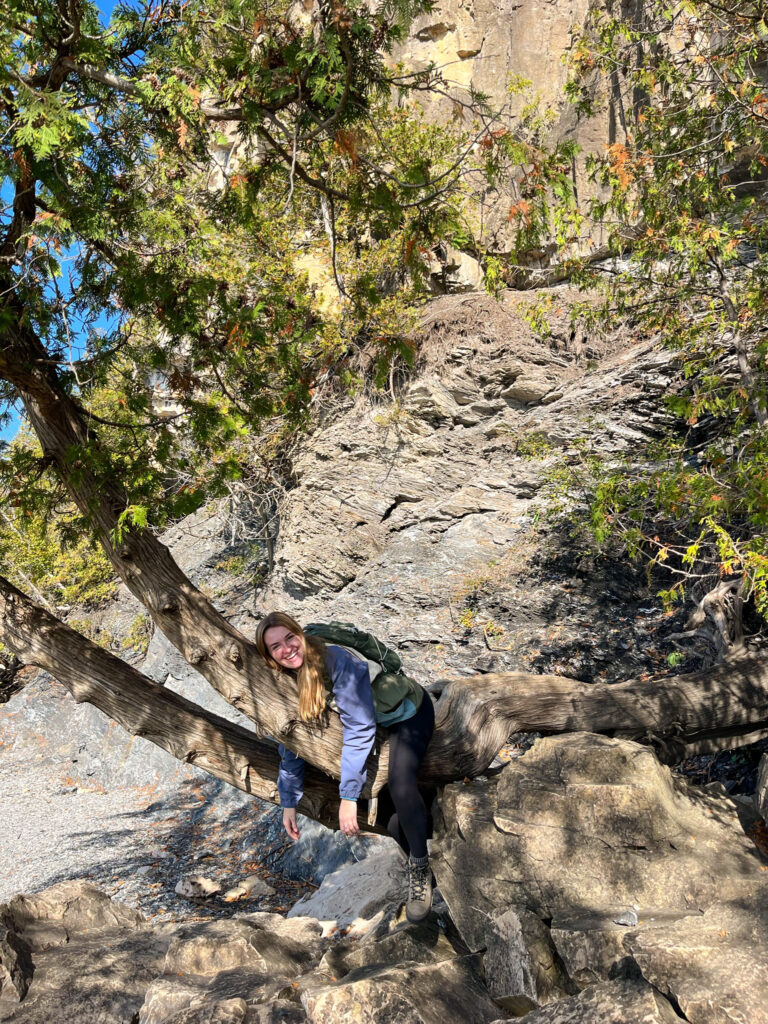
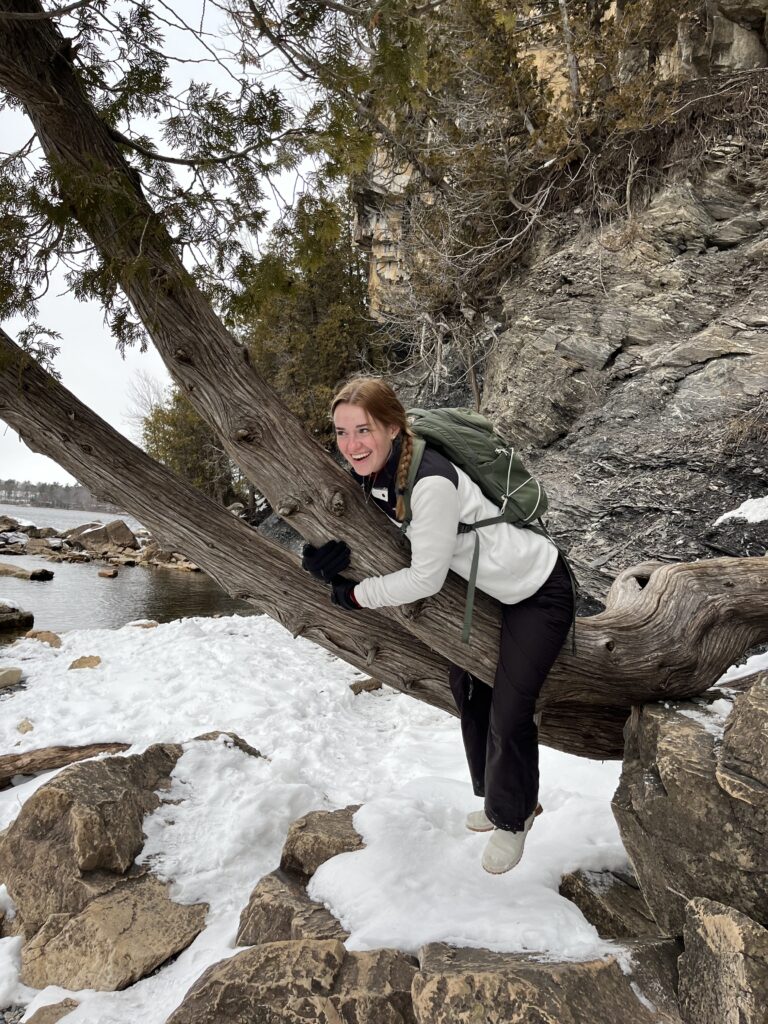
In what ways do nature and culture intertwine here?
As a wildly popular destination itself, and neighbor to a well-known beach, Rock Point fosters the human-environmental exchange in a myriad of ways, facilitating the connection between the greater Burlington community and their environment. That is, with a sugar shack, solar garden, and a bike trail that runs right through it, Rock Point is a paragon of cultural and natural intermingling, allowing its human inhabitants to enjoy everything it has to offer.
Do you consider yourself a part of your place? Why or why not?
While I recognize that there are individuals who are inextricably linked to the Rock Point, some for generations, and that I am certainly no veteran, I would like to believe that I’ve forged my own connection to the land here, whether it is a significant to Rock Point or not, it has made its mark on me.
